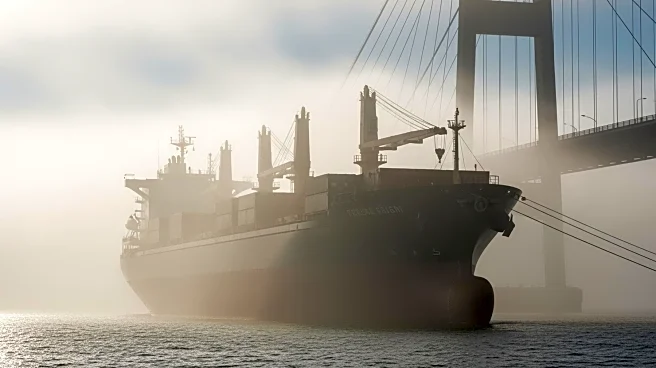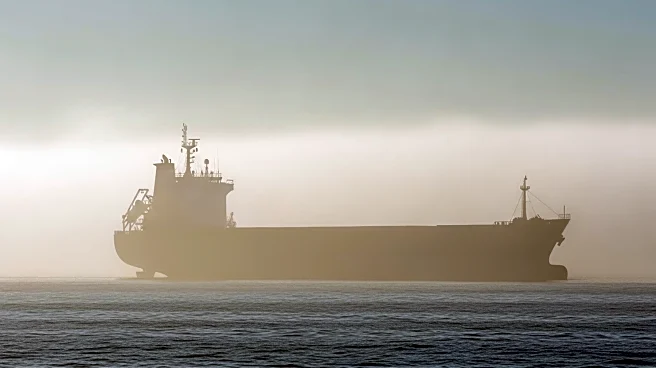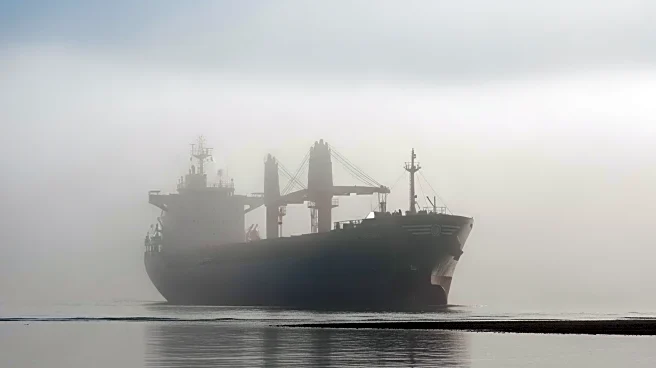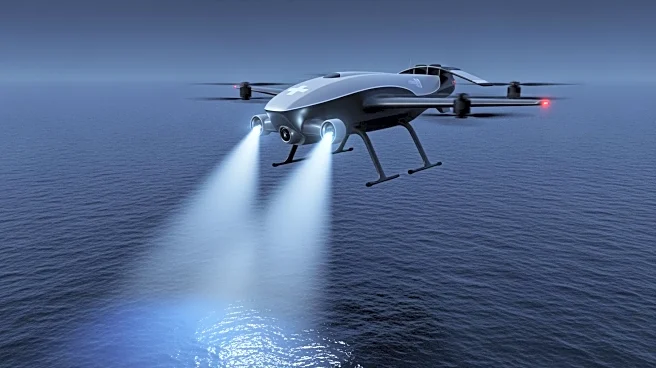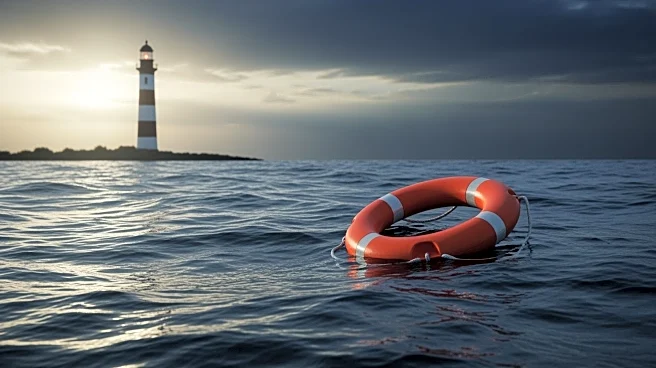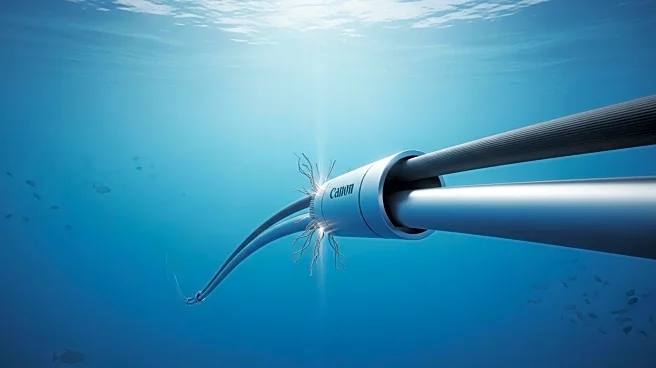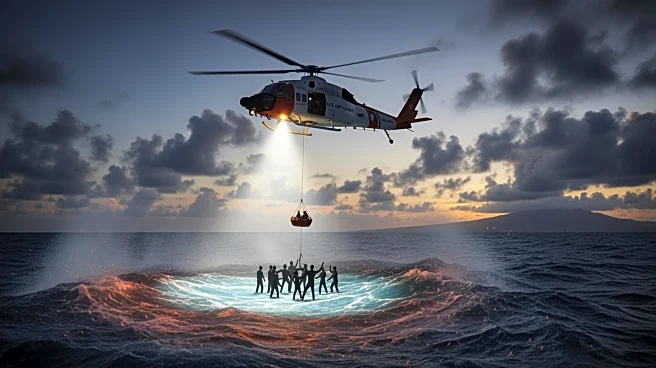What's Happening?
A Norwegian cargo ship, Hagland Captain, grounded under the Svinesund Bridge, a vital roadway linking Norway and Sweden, due to heavy fog. The incident occurred at approximately 0100 local time on the Swedish
side of the border. The vessel was carrying timber and had 88,000 liters of oil onboard, including 85,000 liters of diesel. Despite the grounding, there was no damage to the bridge, and the vessel was refloated without injury to the crew or pollution. The Swedish Coast Guard, along with the Swedish Maritime Rescue Service, responded to the incident, preparing environmental equipment in case of a leak. Divers were sent to survey the hull, and two salvage tugs successfully refloated the ship during high tide, moving it to a dock in Halden, Norway, for further inspection.
Why It's Important?
The grounding of the Hagland Captain highlights the challenges of navigating in adverse weather conditions, particularly in areas with significant infrastructure like the Svinesund Bridge. The incident underscores the importance of maritime safety protocols and the readiness of rescue services to prevent environmental disasters. The successful refloating of the vessel without pollution or injury demonstrates effective coordination between Norwegian and Swedish authorities. This event serves as a reminder of the potential risks associated with maritime transport and the need for stringent safety measures to protect both human life and the environment.
What's Next?
Following the incident, the Coast Guard conducted interviews and tested the crew for alcohol, reporting no suspicion of a crime. The shipping company CEO noted that the ship encountered thicker fog than expected, which contributed to the grounding. The vessel will undergo further surveys at the dock in Halden to assess any damage and ensure it is safe for future voyages. Authorities may review navigation protocols and safety measures to prevent similar incidents in the future, especially in fog-prone areas.
Beyond the Headlines
The grounding incident may prompt discussions on improving navigation technology and training for crews to handle unexpected weather conditions. It also raises questions about the environmental preparedness of maritime operations, emphasizing the need for robust contingency plans to address potential oil spills or other environmental hazards. The cooperation between Norwegian and Swedish authorities could lead to enhanced cross-border maritime safety initiatives.
